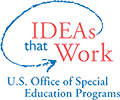Share this Guide
Performance Feedback PLO
Definition: Performance feedback is a research-based strategy for improving teaching quality, particularly when it focuses on the key features of effective instruction (Fallon et al., 2015). Researchers have shown that performance feedback can be used to improve and maintain implementation of specific instructional practices even when feedback is withdrawn (Brock & Carter, 2017; Cornelius & Nagro, 2014; Horner et al., 2005). To be effective, performance feedback should be immediate, specific, positive, and corrective (Cornelius & Nagro, 2014). Teacher education programs and professional development (PD) providers can provide candidates and teachers with performance feedback using various practice-based learning opportunities (PLOs) such as bug-in-the-ear coaching and video analysis (Brownell et al., 2019). Teacher educators and PD providers can also teach candidates and teachers to provide feedback to their peers using PLOs such as peer coaching and lesson study.
Description:
This PLO, developed by Dr. Kyena Cornelius, was designed to develop candidates’ skill in providing peer performance feedback on the following four high-leverage practices (HLPs):
- Use student assessment data, analyze instructional practice, and make necessary adjustments that improve student outcomes (HLP#6).
- Use explicit instruction (HLP#16).
- Use strategies to promote active student engagement (HLP#18).
- Provide positive and constructive feedback to students to guide their learning and behavior (HLP#22).
Candidates are taught to use an adapted version of the Classroom Observations Student-Teacher Interactions (COSTI) to provide performance feedback (Doabler et al., 2015; Smolkowski & Gunn, 2012). This PLO consists of four stages: (1) Familiarize candidates with the observation protocol, (2) Develop prerequisite knowledge to provide peer-performance feedback, (3) Plan and implement a video-recorded lesson, and (4) Score a peer’s video and provide performance feedback on their use of the four HLPs. This PLO addresses the second, third, and fourth stages of McDonald and colleagues’ (2013) enactment cycle.
In this video, Dr. Cornelius describes how she and her colleagues use a structured observation tool to help candidates learn to provide peer-performance feedback on the four HLPs.
Context: This PLO occurs later in the candidates’ program, prior to student teaching. Candidates have already acquired prerequisite knowledge of the HLPs they are expected to demonstrate during instruction. Lesson plans are created using Anita Archer’s explicit instruction model. During the semester in which the PLO is used, teacher candidates are enrolled in reading and mathematics method courses. They also participate in a course entitled Professional Growth and Development for Teachers of Diverse Learners in which this PLO occurs. For the course, teacher candidates are placed in a local elementary school three days a week for 10 weeks. Candidates work in pairs to deliver math and reading interventions to elementary students participating in Tier 2 interventions. During the first five weeks of the field experience, Partner A plans instruction with Partner B. Partner A then delivers the lesson, conducts weekly progress-monitoring assessments, develops new lessons with Partner B based on data, and records lessons to share with course instructors and Partner B. Partner B watches the videos, scores the instruction using the observation protocol, participates in planning future instruction, and provides performance feedback. At Week 6, candidate partners switch roles.
Performance Feedback PLO
Stage 1: Developing Prerequisite Knowledge
What is this stage about?
In this stage, candidates learn how to observe each other using the observation protocol.
How does the instructor implement this stage?
Step 1: Instructor introduces the adapted COSTI protocol (Resource A) and models using it with videos from https://explicitinstruction.org.
Step 1a: Review four indicators of the components of effective instruction addressed in the adapted COSTI, specifically the Likert rating scale (i.e., HLP Data Collection, Delivering the Model, Effective Unguided Practice, Active Engagement). These components are related to three of the four HLPs addressed in this PLO (HLP#6, HLP#16, HLP#18). Note: Effective Unguided Practice refers to practice opportunities that allow students to demonstrate skills or strategies taught independently.
Step 1b: Review student-teacher interactions section of the adapted COSTI focused on the five interactions involved in effective, explicit teacher student interactions and related to three of the four HLPs taught in this PLO (Teacher demonstration/prompt, Practice opportunity, Appropriate error correction, Provided follow-up practice, Provided affirmation or another error correction).
Step 2: Instructor demonstrates how to use the adapted COSTI with two videos of teacher educators delivering explicit reading instruction to each other.
Step 3: Instructor works with candidates to reliably use the adapted COSTI. Candidates independently score the COSTI and compare ratings with the teacher educators.
Materials and resources used to implement Stage 1
- Resource A: Performance Feedback Observation Tool
- Videos from https://explicitinstruction.org.
- Videos of teacher educators instructing each other in reading and mathematics content to be delivered in field experience. These videos will need to be created by the course instructor or instructors so that instructional strategies are tailored to the course content. Alternatively, one could use unedited videos from the highleveragepractices.org website, although they may not support course content.
Questions other faculty/PD providers might have when implementing this practice
How do candidates know when to start tracking the interactions?
The best time to start collecting the interaction is during the first guided practice section of a lesson. Candidates select a five-minute segment of the guided practice section to score for types of teacher student interactions.
How do they rate the behaviors in the interactions?
Each time candidates observe an instance of teacher demonstration/prompt, provided follow-up practice, and provided affirmation or another error correction, they write a tally mark. If they do not observe the behavior, they do not leave a mark. Candidates also indicate with a “c” when students respond correctly to the practice opportunity and an “e” when students respond incorrectly. Additionally, candidates indicate a “+” when the error correction is appropriate and a “-” if they do not provide specific feedback or if the error is unacknowledged
When do they stop recording interactions?
They can stop either when they run out of space on the observation tool or after five minutes elapses. The time will vary depending on the content and structure of the lesson being observed.
How do they rate Part 1 of the adapted COSTI?
They use the Likert rating and associated anchors to rate the four behaviors on that portion of the observation tool.
Stage 2: Learning How to Provide Feedback
What is this stage about?
In this stage, candidates learn essentials of effective performance feedback.
How does the instructor implement this stage?
Step 1: Candidates complete class readings about performance feedback to prepare for class discussion.
Step 2: Instructor engages candidates in discussion of readings, helps them identify examples and non-examples of specific performance feedback, and discusses why examples are effective.
Step 3: Instructor models how to give specific performance feedback by role playing the process of giving feedback with one of the candidates. Instructor stops and points out examples and non-examples during the model.
Step 4: Candidates practice giving each other performance feedback using a scenario/role play.
- Step 4.1.: Candidates teach the skill involved in the scenario to a small group of peers.
- Step 4.2: Peers serving as K-12 students take notes about feedback provided.
- Step 4.3: Peers debrief with candidate teaching the task and share examples of feedback that was evaluative (e.g., “good job”) or formative (e.g., “I like the way you are holding the knife to spread the mustard; it makes it easier to do.”) They explain how formative feedback promotes student learning.
Materials and resources used to implement Stage 2
- Collins, L. W., Cook, S. C., Sweigart, C. A., & Evanovich, L. L. (2018). Using performance feedback to increase special education teachers’ use of effective practices. TEACHING Exceptional Children, 51(2), 125-133.
- Grimm, E. D., Kaufman, T., & Doty, D. (2014). Rethinking classroom observation. Educational Leadership, 71(8), 24-29.
- Scenarios developed by teacher educators and written on index cards that candidates use in a role-play situation. The scenarios involve tasks that are easy for candidates to implement, such as how to tie your shoe; how to make a sandwich; etc.
Questions other faculty/PD providers might have when implementing this step
What type of scenarios do you use?
Scenarios can be anything from teaching someone to tie a shoe to making a peanut butter sandwich. We have even asked candidates to demonstrate the proper way to download an app. The scenarios are simple to allow candidates to focus on learning to provide appropriate feedback to K-12 students and to each other once the role play is complete.
Do candidates use a checklist to rate feedback statements?
No, candidates simply identify an action and provide specific information that can be used to replicate or correct the actions.
What are some of the challenges candidates encounter?
Candidates often do not provide specific feedback initially, and the instructor needs to carefully model and practice providing specific feedback with them. They also tend to be uncomfortable providing their peers with feedback, so the instructor needs to model how to give feedback in a constructive manner.
Stage 3: Candidates Plan and Implement a Lesson
What is this stage about?
In this stage, candidates work in pairs to collaboratively plan and teach six lessons/per week (three reading and three math lessons).
How does the instructor implement this stage?
Step 1: Partners work together to develop three math and three reading lesson plans that they will deliver in their field placement (to be completed outside of class).
Step 2: Partner A delivers the six lessons while Partner B observes.
Step 3: Candidates identify one reading and math lesson for their focus lesson. They provide the university instructor with a video of the focus lessons.
Step 4: Partners switch roles after week five, and Partner B teaches while Partner A observes.
Materials and resources used to implement Stage 3
- Lesson-plan template.
- Materials and resources needed to deliver lessons (e.g., math manipulatives, reading program).
- Curriculum-based measurements (weekly results used to plan future lessons).
Questions other faculty/PD providers might have when implementing this step
Are candidates already proficient in developing lesson plans?
Yes, candidates are proficient at lesson planning as a pre-requisite to this course.
Are lesson plans submitted to instructor for a grade?
Yes, but they are submitted to course instructors for their methods courses.
Stage 4: Candidates Score Partner Videos and Provide Feedback
What is this stage about?
In this stage, candidates score videos using the adapted COSTI and learn to share feedback.
How does the instructor implement this stage?
Step 1: Candidate B scores Candidate A’s six videos using the observation protocol.
Step 2: Candidate B provides Candidate A with feedback on the focus lesson while the instructor observes and listens.
Step 3: Instructor independently completes observation protocol for focus lesson.
Step 4: The instructor provides candidates with feedback on their observation and feedback session through email using the observation protocol. The goal is to have candidates achieve scores that are similar to the instructor’s score on the observation protocol.
Step 5: Candidates B and A reverse roles and repeat the process.
Materials and resources used to implement stage 4
- Resource A: Performance Feedback Observation Tool
- Video recordings of instruction (candidates use personal devices).
Questions other faculty/PD providers might have when implementing this stage
Do we have enough time in a class period to get to everyone?
The first round does take more time than the second. I ask for volunteers to stay after class to give equal time to groups. After the first round, I only dedicate one class period for a three-day-a-week course or one hour of a weekly seminar to walk around the class and listen to how candidates are providing peers with feedback.
How might we adapt if we have a large class of students?
The instructor might try providing candidates with a structured feedback form that includes two to three “Glows” and two to three “Grows.” The instructor could then randomly spot check how candidates are providing feedback to each other.
References
Brock, M. E., & Carter, E. W. (2017). A meta-analysis of educator training to improve implementation of interventions for students with disabilities. Remedial and Special Education, 38(3), 131-144.
Brownell, M. T., Benedict, A. E.*, Leko, M. M.*, Peyton, D.**, Pua, D.**, & Richards-Tutor, C.** (2019). A continuum of pedagogies for preparing teachers to use high-leverage practices (HLPs). Remedial and Special Education, (40)6, 338-355.
Cornelius, K. E., & Nagro, S. A. (2014). Evaluating the evidence base of performance feedback in preservice special education teacher training. Teacher Education and Special Education, 37(2), 133-146.
Doabler, C. T., Baker, S. K., Kosty, D. B., Smolkowski, K., Clarke, B., Miller, S. J., & Fien, H. (2015). Examining the association between explicit mathematics instruction and student mathematics achievement. The Elementary School Journal, 115(3), 303-333.
Fallon, L. M., Collier-Meek, M. A., Maggin, D. M., Sanetti, L. M., & Johnson, A. H. (2015). Is performance feedback for educators an evidence-based practice? A systematic review and evaluation based on single-case research. Exceptional Children, 81, 227-246.
Horner, R. H., Carr, E. G., Halle, J., McGee, G., Odom, S., & Wolery, M. (2005). The use of single-subject research to identify evidence-based practice in special education. Exceptional children, 71(2), 165-179.
McDonald, M., Kazemi, E., & Kavanagh, S. S. (2013). Core practices and pedagogies of teacher education: A call for a common language and collective activity. Journal of Teacher Education, 64(5), 378-386.
Smolkowski, K., & Gunn, B. (2012). Reliability and validity of the Classroom Observations of Student–Teacher Interactions (COSTI) for kindergarten reading instruction. Early Childhood Research Quarterly, 27(2), 316-328.






